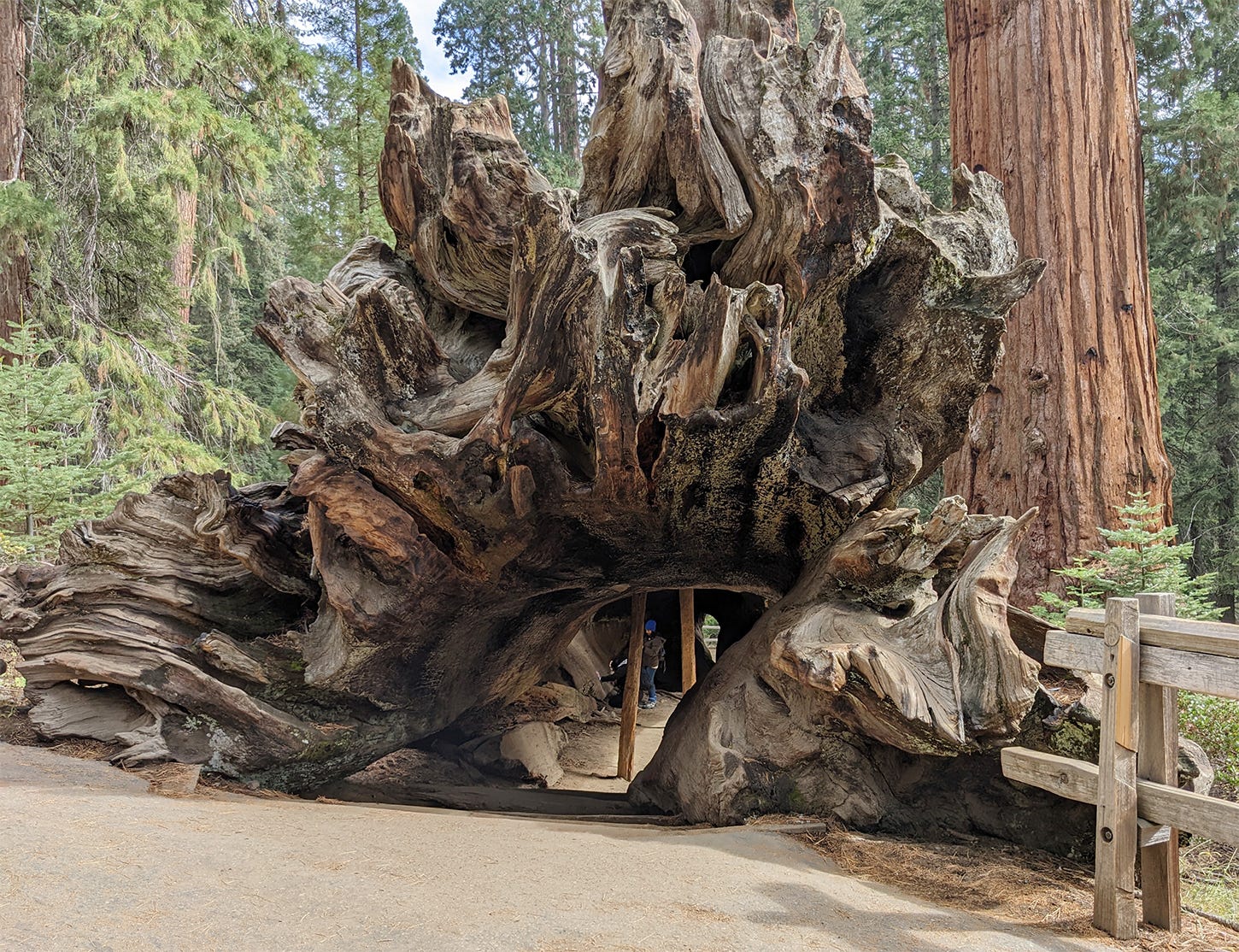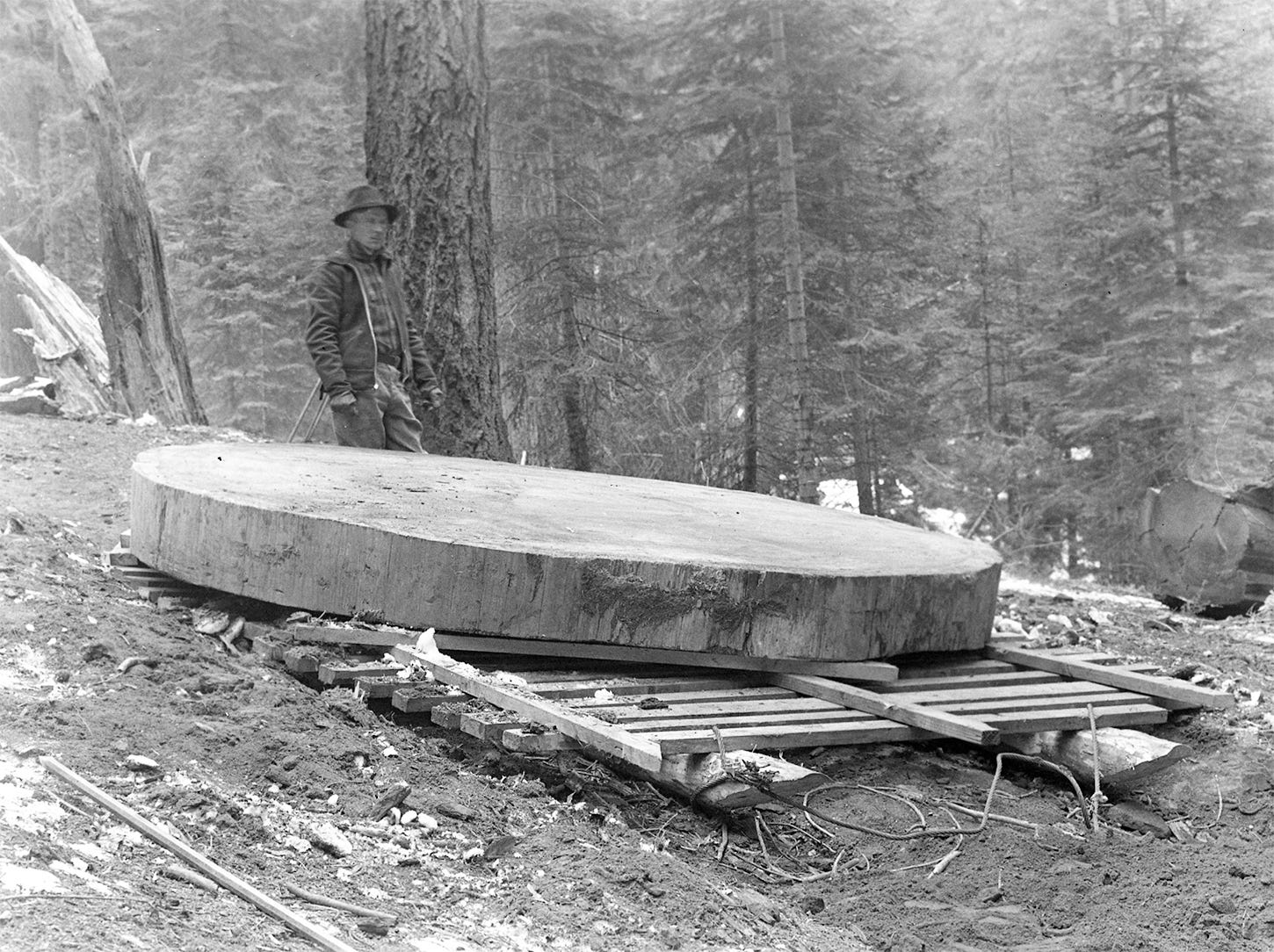Volume 2, Number 26 - Monday, Nov. 6, 2023
Published twice a week, on Monday and Thursday

Perspective
I AM SO CONFUSED. The Los Angeles Times this morning reported about an oak tree growing in the Jurupa Hills of Riverside County. According to the article (read it HERE), the tree started life near the end of the last Ice Age and is estimated to be 13,000 to 18,000 years old. This particular Quercus palmeri (Palmer’s oak) is said to be one of the oldest living organisms on Earth.
But HERE, the National Park Service tells us that “Giant sequoias are the third longest-lived tree species with the oldest known specimen to have been 3,266 years old in the Converse Basin Grove of Giant Sequoia National Monument. Giant sequoias are only outlived by bristlecone pines (oldest age recorded at 4,844 years in the Great Basin) and by Alerce trees (oldest age recorded at 3,639 years in Chile).”
I’m not a scientist or a historian. As a journalist, I use the words “according to” quite a lot because unless I have seen something for myself, I must rely on reports from others.
This morning, “according to” the LA Times, an oak tree in Southern California may be older than the three species cited by the NPS as the oldest.
Last Monday, you may have seen, I used a photo from archives of the Tulare County Library with a caption that claimed that the elk in the photo were in Sequoia National Park. Not so, as you can read below in the note under “Historic photo of the week.”
In a history book about Central California from the late 1800s that I read recently, there was a comment that Aztec sites had been located around Tehachapi. There are plenty of sites around Tehachapi (and throughout California) that provide evidence of the lives of people who lived here before Europeans, but they weren’t Aztecs. According to Wikipedia and other sources, you would have to go much further south to find evidence of the Aztec Empire.
In the late 1800s, much of the publishing of “history” in California was focused on the “pioneers” who had taken over the land. Some of it was funded by people who paid to include their biographies. I suppose someone might have mentioned finding Indian sites, and the author assumed they must have been Aztecs.
My point is that everything that has ever been published is not necessarily accurate (even before social media).
But back to trees…
Do they have to be the oldest or the largest for us to care about them?
In Riverside County, according to the LA Times article, the four-foot-tall tree known as the Jurupa Oak may be threatened by a proposed residential development.
And, Louis Sahagun of the LA Times wrote:
(The tree is) 1,000 years older than a 12,000-year-old Palm Springs creosote bush that was previously thought to be the oldest plant in California, 8,000 years older than bristlecone pines, and 10,000 years older than the redwoods, according to a study by UC Davis and UC Riverside scientists.”
So I had to check out that creosote bush. I’ll admit I’ve never thought much about creosote bushes. Still, I recently learned HERE that the amazing fragrance I associate with Tehachapi summer mornings comes from moisture activating the essence of the bushes growing in the area. According to Wikipedia, “King Clone is thought to be the oldest creosote bush ring in the Mojave Desert. The ring is estimated to be 11,700 years old, making it one of the oldest living organisms on Earth.” Read more HERE.
What other trees and organisms have not yet been studied to determine where they might be on the spectrum of oldest or largest?
I’ve decided I don’t care. Nearly everyone I’ve ever talked with about giant sequoias has told me they love the Big Trees. I do, too. And I love oak trees and coastal redwoods. Creosote bushes recently made my list of favored plants. And California buckeye — they’re fabulous with their bright green foliage in the early spring and silvery bark after the red leaves fall off. When we lived in Oregon, I became very fond of madrone trees. They put on quite a show when they pop their bark. And Douglas fir — oh my!
Still, I’m happy that scientists continue studying all of this stuff. The more we can learn, the better!
Wildfire, water & weather update
Rain is expected by Monday, with temperatures dropping at Calaveras Big Trees State Park. At Yosemite National Park, there may be rain and snow at higher elevations from the same storm, but precipitation may not persist south of there. The best Sierra Nevada weather forecasts are at NWS Hanford, HERE, and NWS Sacramento, HERE.
Wildfire update: Prescribed burning continues at many locations in the Sierra Nevada, as weather and other conditions allow. If you check out the WatchDuty map HERE you’ll see a string of green flame icons where prescribed burning is underway.
Last week, Calaveras Big Trees State Park reported that the long-awaited South Grove prescribed burn has been postponed due to recent wet weather. This morning’s forecast is for rain. Officials will continue to monitor the situation.
Did you know you can comment here?
It’s easy to comment on items in this newsletter. Just scroll down, and you’ll find a comment box. You’re invited to join the conversation!
Historic photo of the week

IMPORTANT NOTE: Last Monday’s edition included a photo from the collection of the Tulare County Library that was identified as elk in Sequoia National Park. I was a bit suspicious about the information because it didn’t fit with other information I had about elk in California. After publication, I heard from William C. Tweed, an environmental historian who worked for the NPS for 30 years, retiring as chief naturalist of Sequoia and Kings Canyon National Parks — and author of some of my favorite books about giant sequoias. He said: “Must tell you that the Tule Elk photo is not from Big Meadows. Everything is wrong, including the type of forest in background. Photo probably taken at Prairie Creek (now in Redwoods NP) where coastal Roosevelt Elk are still present today. Elk in Sequoia NP were introduced to the lower Middle Fork Kaweah region early in last century and did not survive beyond the 1920s — not good habitat for grasslands animals. Point is that Tule Elk are not mountain animals.”
Thanks for reading!




On Wikipedia, link below, there is a photo. It's reportedly 4 foot tall. I don't understand cloning, which is apparently how it's been alive all these thousands of years. https://en.wikipedia.org/wiki/Jurupa_Oak
I could not find a photo of that Palmer's oak, was there one posted somewhere? And I'm surprised you can do ring counts that high.